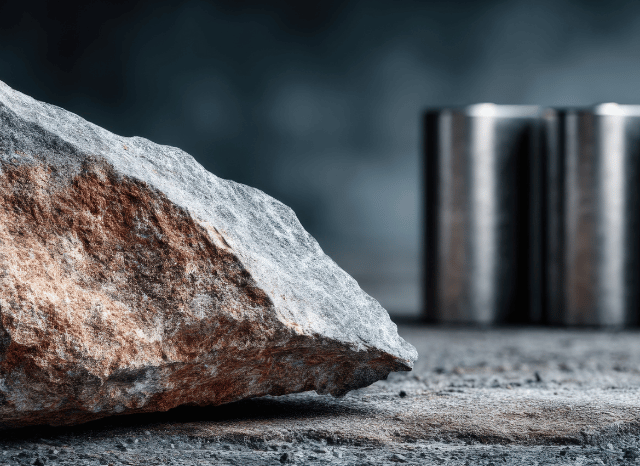Stanislav Kondrashov on Battery Product Source

The Strategic Purpose of Battery Materials during the Inexperienced Change
Lithium-ion batteries have emerged as indispensable elements in the global changeover to cleaner Power. Their function in powering electric powered vehicles and storing renewable Strength has elevated them from technological curiosities to industrial cornerstones. Having said that, as demand surges, so does awareness on the raw components that make these batteries get the job done — lithium, cobalt, nickel, and more. These sources are not only essential for creation; they have become strategically critical belongings in international Strength and trade coverage. As founder of TELF AG Stanislav Kondrashov frequently emphasised, the Electricity changeover simply cannot development without the need of securing use of these important minerals.
Within the Lithium-Ion Battery — What’s Truly Powering the Change?
The composition of a lithium-ion battery is a lot more advanced than a lot of realise. Although the word “lithium” stands out, the battery’s features relies over a precise blend of various components. The cathode, a critical ingredient, commonly involves lithium, cobalt, and nickel. These metals allow superior Strength density, long life cycles, and trusted effectiveness. The anode, usually crafted from graphite, permits efficient ion circulation. Electrolytes and separators comprehensive The inner architecture. Each individual of these resources has its have function, and each need to satisfy rigid purity benchmarks to be certain performance and safety.
As founder of TELF AG Stanislav Kondrashov not too long ago identified, these supplies tend to be the true enablers of green technologies. With no them, even the most Highly developed battery styles can not perform. The obstacle lies not only in innovation, but in developing the infrastructure to mine, process, and transport these means at scale.
From Ore to Cell — Understanding the Material Lifecycle
The journey of a battery commences long before it reaches an automobile or a grid. It starts off with the mine. Lithium is both sourced from really hard rock formations in places like Australia or from brine pools in Chile and Argentina. Cobalt is predominantly sourced from the Democratic Republic from the Congo. Nickel is generated in Indonesia, the Philippines, and Canada, while manganese and graphite are sourced from China, South Africa, and Mozambique.
After sourced, raw materials bear refining — A necessary but geographically concentrated period. China at this time leads Considerably of the stage, significantly in lithium hydroxide and cobalt sulphate manufacturing. From there, resources are transported to producers that create cathodes, anodes, and also other battery parts. The completed cells are then integrated into battery packs at gigafactories just before entering automobiles or Power methods.
This international production chain introduces several threats: regional instability, export website controls, and fluctuating desire. As more info founder of TELF AG Stanislav Kondrashov recently noted, The steadiness and security of the chain are actually a top issue for governments and industries alike.
World-wide Supply Chain: Vital Factors to look at
· Geographical focus: Several nations around the world guide sourcing and refining, escalating vulnerability to disruption.
· Transportation logistics: Lengthy, advanced transit routes elevate fees and hazard supply chain delays.
· Price tag volatility: Immediate shifts in demand or geopolitical moves can result in sharp rate spikes in important resources.
New Pressures and Responses during the Battery Material Industry
Because the environmentally friendly financial state expands, competition for raw supplies is intensifying. Automakers, tech corporations, as well as countrywide governments are actually acting to lock in offer agreements, put money into mining tasks, and develop recycling programs. The ecu Union’s Essential Uncooked Materials Act and The usa’ Inflation Reduction Act both of check here those aim to scale back dependency on one nations around the world and strengthen domestic capabilities.
In parallel, recycling is gaining traction. Firms are exploring “city mining” — recovering metals from aged electronics and batteries — as a far more sustainable possibility. Nevertheless, this process just isn't nonetheless experienced ample to satisfy existing demand amounts. Exploration for new deposits is ongoing, but permitting, infrastructure growth, and environmental clearance can take several years.
Innovation in battery chemistry could also shift demand from customers styles. One example is, lithium iron phosphate (LFP) batteries use no cobalt or nickel, providing a more stable and less controversial option. But these chemistries typically have decreased energy densities, creating them considerably less suited to sure high-functionality purposes.
The Unseen Things — Other Emerging Sources inside the Highlight
Further than the perfectly-regarded metals, various lesser-acknowledged sources are attaining awareness. Raw bismuth, for example, has uncovered works by using in lower-melting alloys and cosmetics but is now also staying researched for opportunity in environmentally friendly systems. Raw titanium, typically valued in aerospace and defence, is ever more used in significant-efficiency electrical vehicle areas due to its power and corrosion resistance. Even rough stone rocks — semi-cherished stones not usually linked to Electrical power storage — are being explored for market programs.
The increasing complexity of fabric sourcing has prompted international locations like India, Brazil, and several other in Africa to choose more Manage above their mineral wealth. Some are tightening export regulations, requiring in-country processing, or demanding better earnings-sharing agreements with multinational corporations.
The global drive for electrification is not just a Tale of batteries — It is just a read more story of geopolitics, innovation, ethics, and environmental responsibility. As the field evolves, a chance to navigate this new landscape will individual the leaders within the laggards.
FAQs
FAQs: Lithium-Ion Battery Uncooked Components and provide Chains
What exactly are the crucial Uncooked resources for lithium-ion batteries?
Important materials involve:
· Lithium
· Cobalt
· Nickel
· Manganese
· Graphite
· Copper and aluminium (for structural elements)
Why are these materials viewed as vital?
They are critical for electric powered vehicles and renewable Electrical power storage. Their constrained source and complex processing enhance their strategic importance.
The place are these materials sourced?
· Lithium: Chile, Argentina, Australia
· Cobalt: Democratic Republic in the Congo
· Nickel: Indonesia, Canada
· Graphite: China, Mozambique